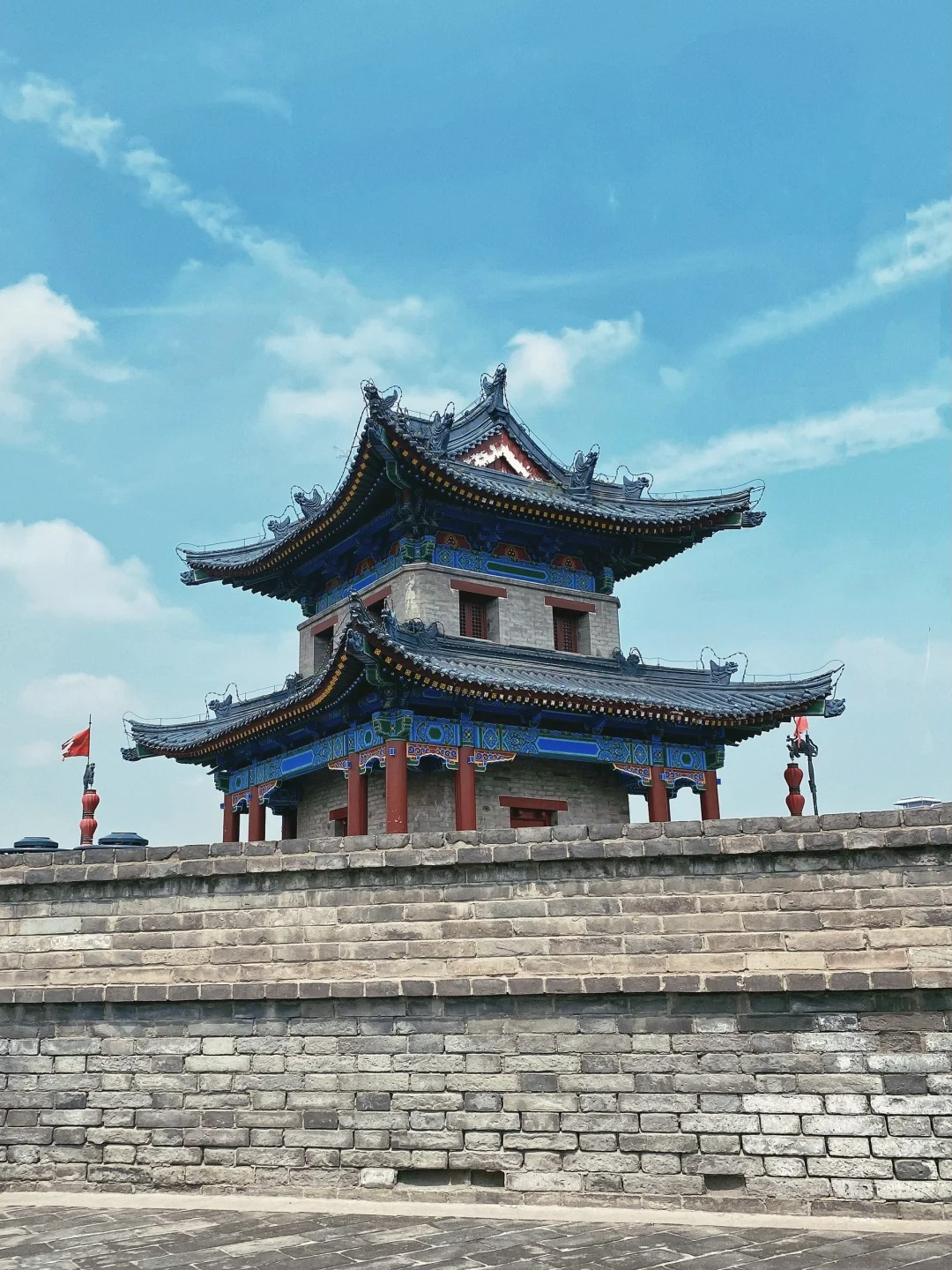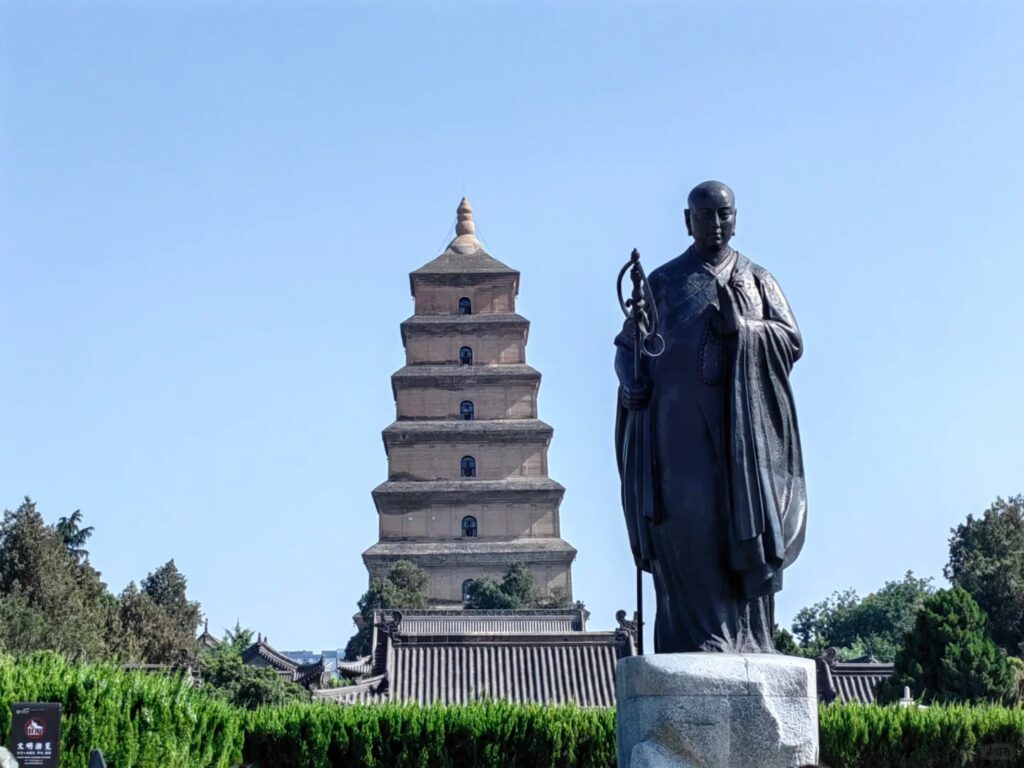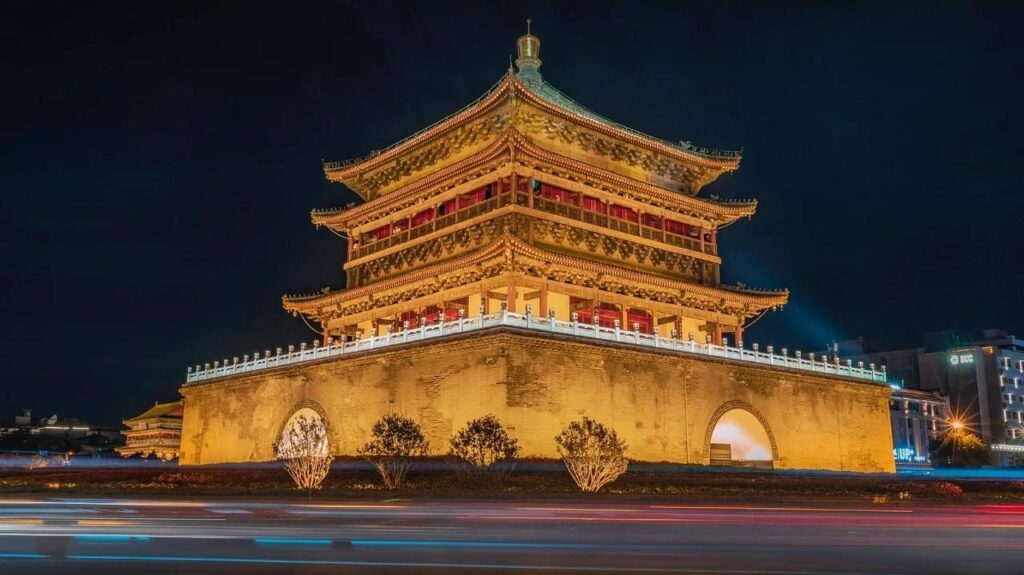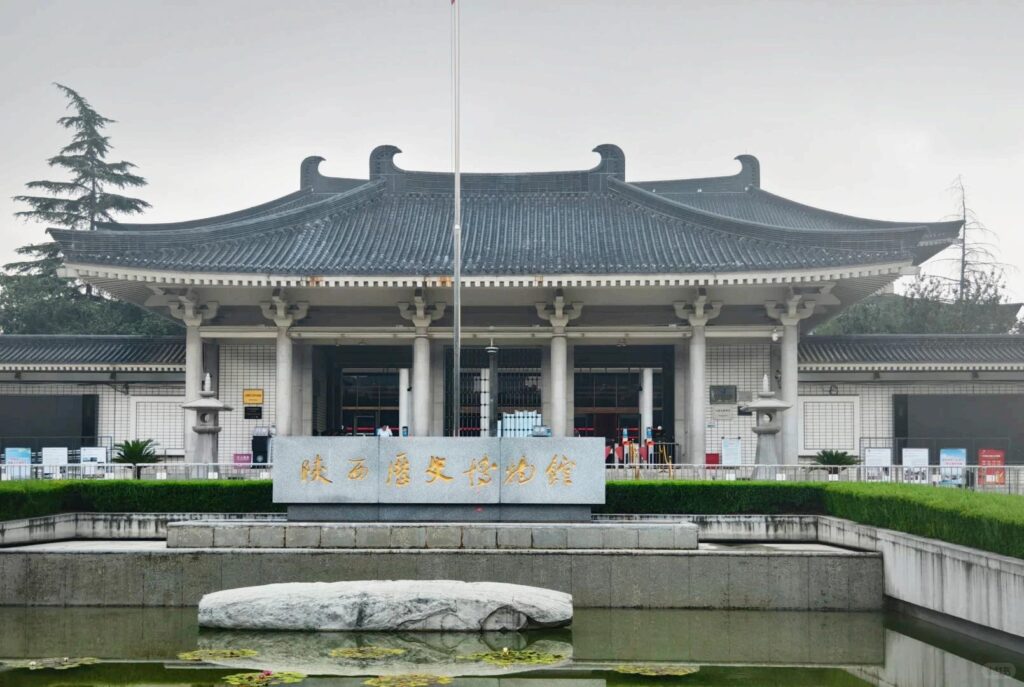Visiting Information
| Information | Details |
|---|---|
| Chinese Name | 西安城墙 (Xī’ān Chéngqiáng) |
| Location and Address | Encircles the city center of Xi’an, Shaanxi Province, China |
| Opening Hours | 08:00 – 22:00 (March to November); 08:00 – 19:00 (December to February) |
| Entrance Fee | 54 CNY for adults; 27 CNY for students and seniors (60+); Free for children under 1.2m |
| How to Get There | By Metro: Line 2 to Yongningmen, Anyuanmen, or Zhonglou stations By Bus: Routes 6, 9, 12, 26, 29, 201, 600, 603, 611, 618 to various gates By Taxi: Easily accessible from anywhere in the city center |
| Best Time for Visit | Spring (March to May) and Autumn (September to November) for pleasant weather |
| Contact Info | Phone: +86 29 8726 1374 |
Overview
The Xi’an City Wall is one of the oldest, largest, and best-preserved city walls in China. It surrounds the old city of Xi’an and is a significant landmark that represents the city’s rich history and ancient Chinese architecture. The wall stretches for about 14 kilometers (8.7 miles) and forms a rectangle around the city center.
Historical Background
The Xi’an City Wall was initially built during the Tang Dynasty (618-907 AD) and was then expanded to its current size during the Ming Dynasty (1368-1644 AD). The wall was constructed as a military defense system to protect the imperial capital of Chang’an (the ancient name of Xi’an). Over the centuries, it has witnessed the rise and fall of several dynasties and has played a crucial role in protecting the city during times of war and unrest.
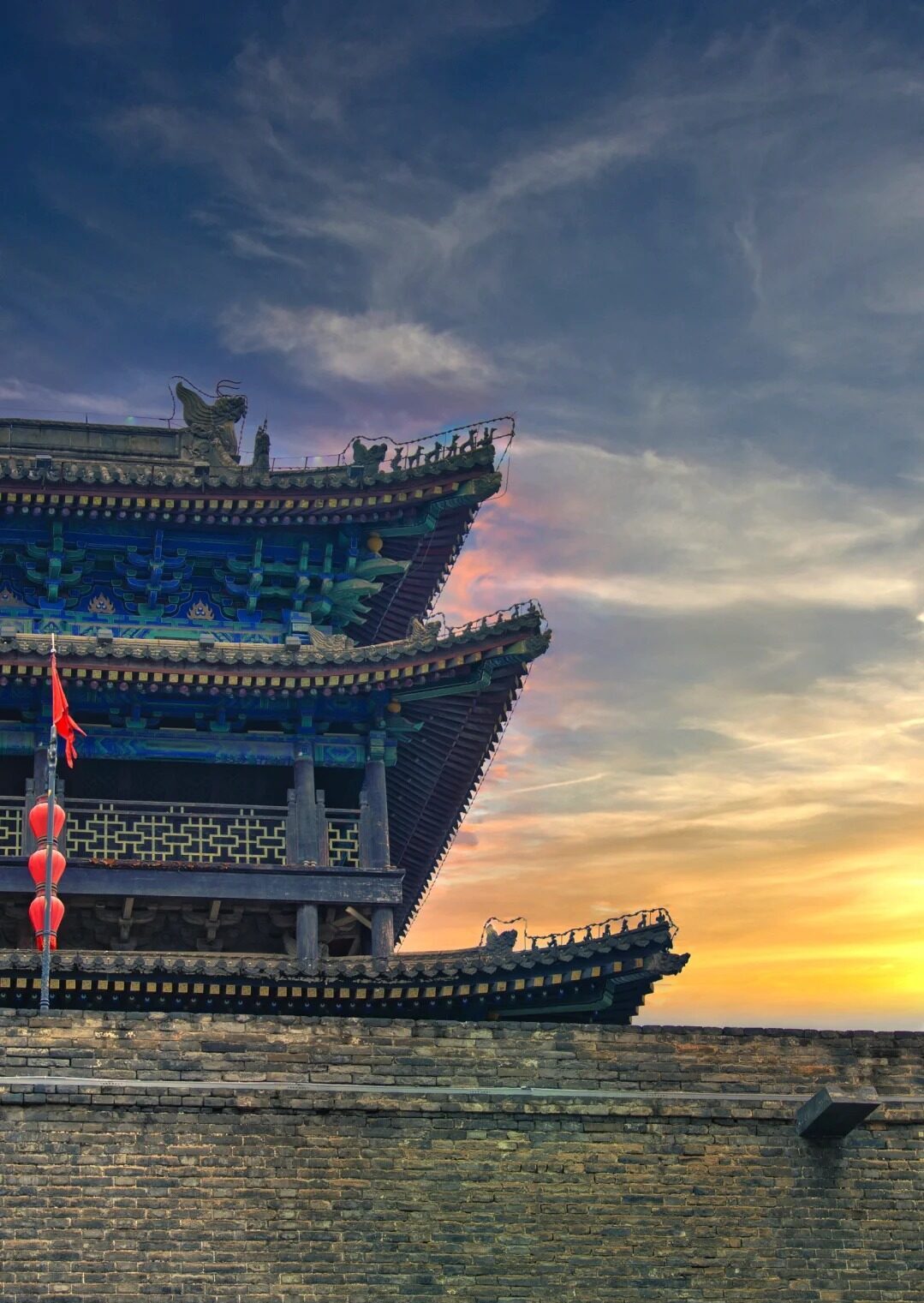
Architectural Features
- Dimensions: The Xi’an City Wall is rectangular in shape, measuring 11.9 km east to west and 14 km north to south. It stands 12 meters high and is 15-18 meters wide at the top, widening to 15-18 meters at the base. This impressive size made it one of the most formidable defensive structures of its time.
- Gates: The wall features four main gates, one in each cardinal direction: Changle (East), Anding (West), Yongning (South), and Anyuan (North). Each gate is topped with intricate towers that showcase traditional Chinese architecture. These gates were the primary entry and exit points for the ancient city.
- Watchtowers: At intervals of about 120 meters, there are 98 ramparts protruding from the main wall. These served as watchtowers, allowing guards to see enemies approaching from all directions without exposing themselves to danger.
- Moat: A wide and deep moat surrounds the entire wall, adding an extra layer of defense to the already formidable structure. This moat, now mostly dry, was an integral part of the city’s ancient defensive system.
Cultural Importance
The Xi’an City Wall is not just a historical monument; it’s a symbol of Chinese civilization and the country’s long history. It represents the advanced urban planning and military defense strategies of ancient China. The wall has become an iconic landmark of Xi’an, drawing millions of visitors each year who come to experience this tangible piece of history. It serves as a reminder of Xi’an’s status as one of the Four Great Ancient Capitals of China and continues to play a significant role in the city’s cultural identity and tourism industry.
Surrounding Attractions
- Bell Tower: Located in the center of Xi’an, the Bell Tower is a symbol of the city. Built in 1384 during the Ming Dynasty, it stands 36 meters tall and offers panoramic views of Xi’an. Visitors can climb to the top for a stunning view of the city and to see the massive bell housed within.
- Muslim Quarter: Just north of the Drum Tower, the Muslim Quarter is a bustling area filled with street food, markets, and mosques. It’s a great place to experience the unique blend of Chinese and Islamic cultures and to try local Xi’an cuisine, including the famous yangrou paomo (mutton soup with bread).
- Great Mosque: Located in the Muslim Quarter, the Great Mosque is one of the oldest and largest mosques in China. Built in 742 AD during the Tang Dynasty, it’s a fascinating blend of traditional Chinese and Islamic architecture. The mosque is still active and provides a unique insight into China’s Muslim community.
- Shaanxi History Museum: Just a short distance from the South Gate of the City Wall, this museum houses over 370,000 relics that span the long history of Shaanxi Province. From prehistoric times to the Qing Dynasty, the exhibits offer a comprehensive view of Chinese history and culture.

Photography Opportunities
- Panoramic City Views: The top of the wall offers unparalleled 360-degree views of Xi’an. Photographers can capture stunning cityscapes, especially during sunrise or sunset when the light bathes the city in warm hues. The contrast between the ancient wall and the modern city beyond creates compelling compositions.
- Gate Towers: The impressive gate towers, particularly when lit up at night, make for dramatic photographs. Their traditional Chinese architecture, with multiple eaves and intricate details, offers numerous angles and perspectives for creative shots.
- Seasonal Changes: The wall takes on different characters with the changing seasons. Spring brings cherry blossoms, summer offers lush greenery, autumn paints the surrounding trees in vibrant colors, and winter occasionally blankets the wall in snow, each providing unique photographic opportunities.
- Cultural Activities: Various cultural events and reenactments often take place on the wall, such as lantern festivals or performances in traditional costumes. These events offer great opportunities for capturing the living culture and history of Xi’an.
Modern Importance
- Tourism Hub: The Xi’an City Wall has become a major tourist attraction, drawing millions of visitors annually. It serves as a focal point for Xi’an’s tourism industry, contributing significantly to the local economy and providing employment opportunities for many residents.
- Cultural Preservation: The wall stands as a testament to China’s commitment to preserving its cultural heritage. Ongoing restoration and maintenance efforts ensure that this ancient structure continues to educate future generations about China’s rich history and architectural achievements.
- Urban Green Space: The area around the wall has been developed into parks and walking paths, providing valuable green space for Xi’an’s residents. This integration of historical preservation and modern urban planning enhances the quality of life in the city.
- Educational Resource: The wall serves as an outdoor classroom for students of history, architecture, and urban planning. It provides tangible evidence of ancient Chinese engineering and military strategy, making it an invaluable educational resource.
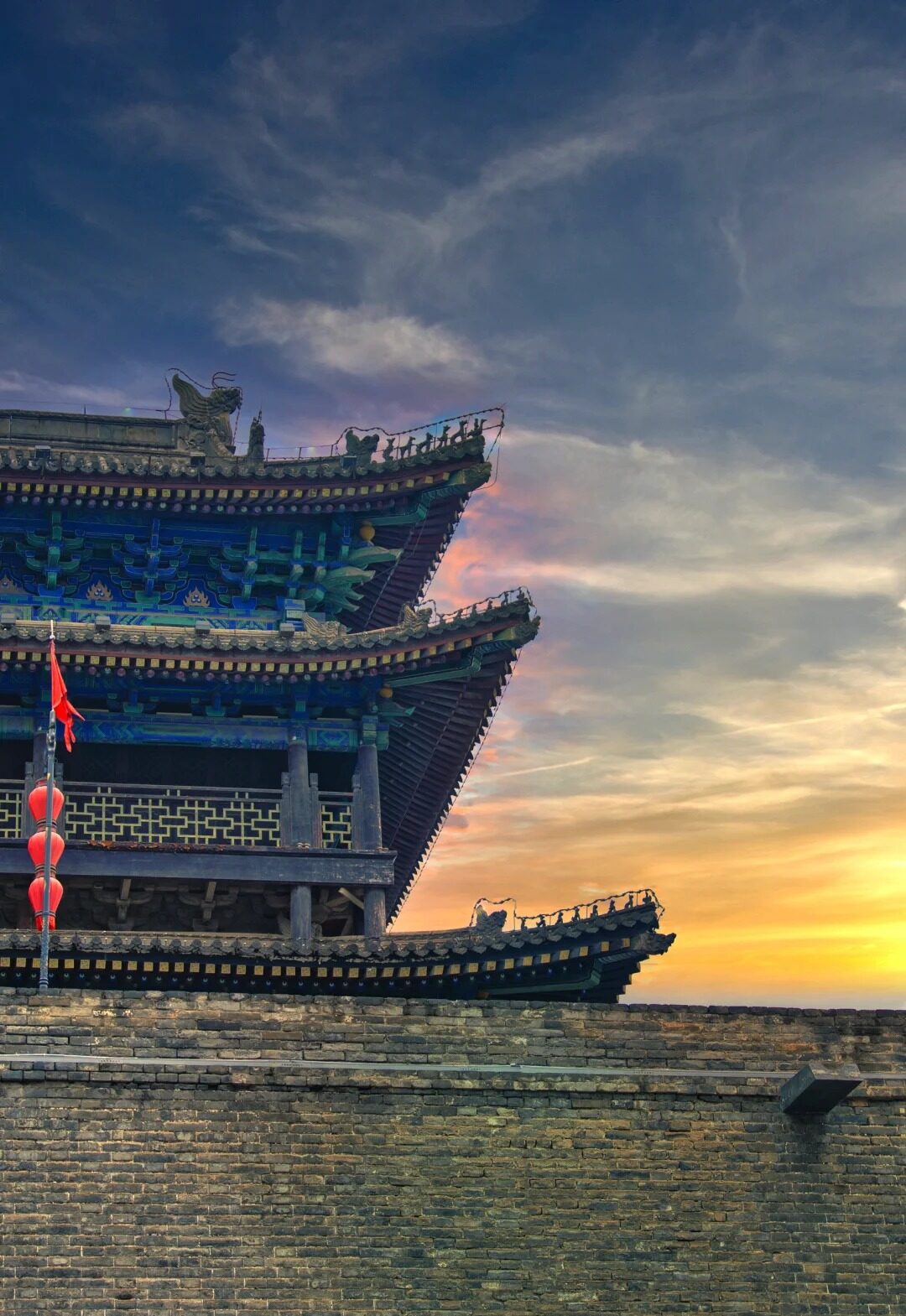
FAQ
- What is Xi’an City Wall famous for?
Xi’an City Wall is famous for being one of the oldest, largest, and best-preserved ancient city walls in China, representing the country’s rich history and ancient defensive architecture. - What’s inside Xi’an City Wall?
Inside Xi’an City Wall, you’ll find the old city of Xi’an, including historical sites like the Bell Tower, Drum Tower, and Muslim Quarter, as well as modern urban developments. - Is Xi’an City Wall free?
No, Xi’an City Wall is not free. There is an entrance fee of 54 CNY for adults, with discounts for students and seniors. - Is Xi’an City Wall worth visiting?
Yes, Xi’an City Wall is definitely worth visiting. It offers a unique perspective on ancient Chinese architecture and provides stunning views of the city. - What to do in Xi’an City Wall?
At Xi’an City Wall, you can walk or cycle around the top of the wall, visit the gate towers, enjoy panoramic views of the city, and participate in cultural activities or events held on the wall. - How do I get to Xi’an City Wall in the local city?
In Xi’an, you can reach Xi’an City Wall by taking Metro Line 2 to stations near the wall (like Yongningmen, Anyuanmen, or Zhonglou), or by bus routes 6, 9, 12, 26, 29, 201, 600, 603, 611, 618 to various gates. - How to visit Xi’an City Wall?
To visit Xi’an City Wall, purchase a ticket at any of the main gates. You can walk or rent bicycles to explore the top of the wall. It’s recommended to allow 3-4 hours for a full visit, including stops at the gate towers and to enjoy the views.


